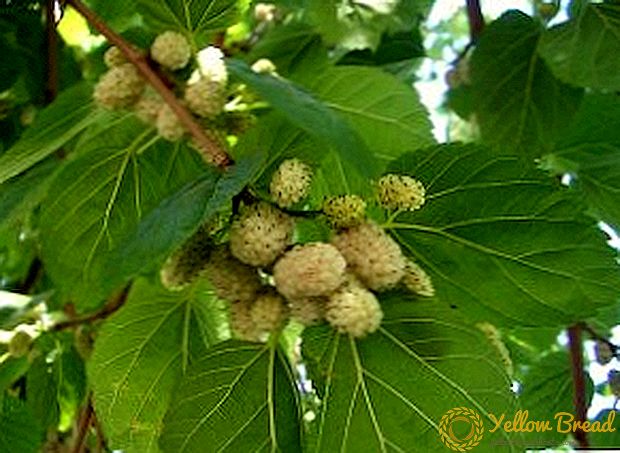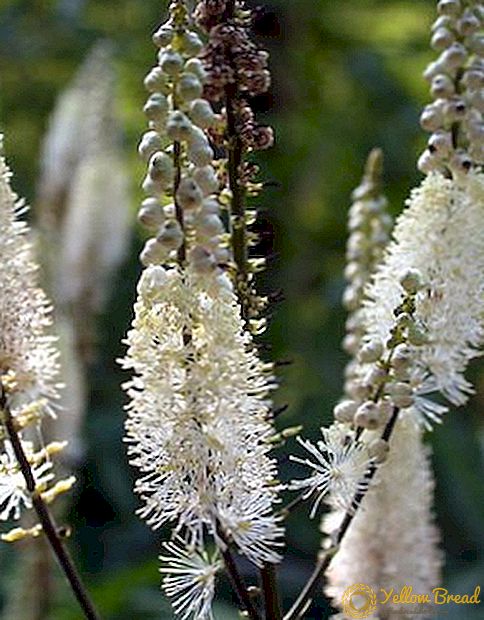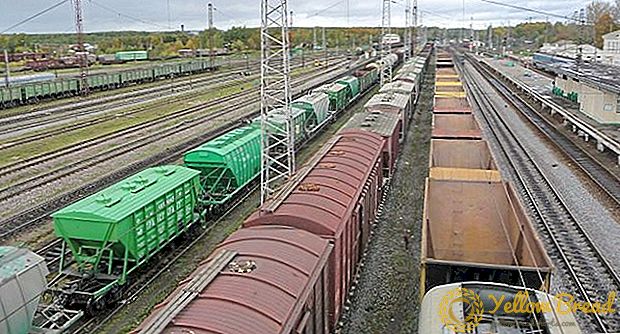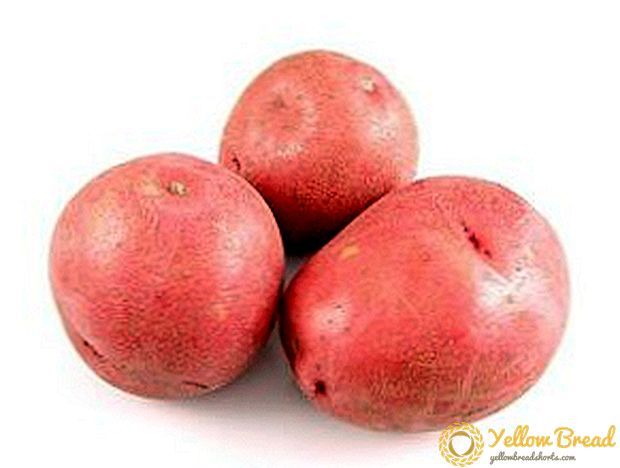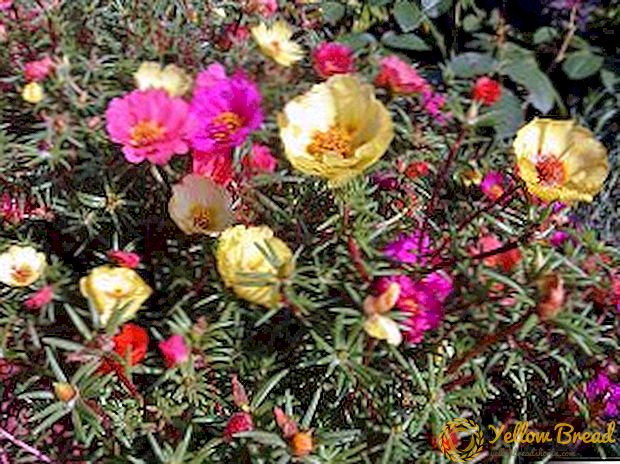
"Labella" - potato variety, refers to the early and high-yielding.
Good keeping quality, high quality of fruits and a minimum rejection rate make potatoes suitable for industrial breeding. Possible cultivation in farms and private farms.
Find out all the current information about the variety of Labella potatoes with photos and descriptions on our website.
Labella potatoes: description of the variety, photo
| Grade name | Labella |
| Gestation period | 70-80 days |
| Starch content | 13-15% |
| Mass of commercial tubers | 78-102 gr |
| The number of tubers in the bush | up to 14 |
| Yield | 176-342 c / ha |
| Consumer quality | excellent taste, average stewiness |
| Recumbency | 98% |
| Skin color | red |
| Pulp color | yellow |
| Preferred growing regions | North Caucasus |
| Disease resistance | the variety is highly resistant to the leaf curling virus, resistant to the golden potato cyst nematode, various types of rot and the causative agent of potato cancer. |
| Features of growing | resistant to elevated temperatures during the growing season, highly adaptable to climatic conditions and soil types. |
| Originator | Solana GmbH & Co. KG (Germany) |
The main characteristic varieties of potatoes "Labella":
- tubers of medium size, weighing 78-102 g;
- the form is oblong-oval, leveled;
- the peel is thin, smooth, reddish;
- eyes are superficial, small, dark red;
- the flesh on the cut is pale yellow;
- starch content below average;
- high content of protein, mineral salts, vitamins of group B.
The amount of starch in potato tubers of other varieties:
| Grade name | Starch |
| Labella | 13-15% |
| Lady claire | 12-16% |
| Innovator | up to 15% |
| Bellarosa | 12-16% |
| Riviera | 12-16% |
| Karatop | 11-15% |
| Veneta | 13-15% |
| Gala | 14-16% |
| Zhukovsky early | 10-12% |
| Lorch | 15-20% |
For a more complete description of Labella potatoes, take a look at the photo:



Characteristic
Variety "Labella" zoned for different regions of Russia, suitable for industrial cultivation. Potatoes tolerate adverse weather conditions, suffers heat and short-term drought.
And in the table below you can see what the yield and the percentage of marketable tubers are in other potato varieties:
| Grade name | Productivity (c / ha) | Tuber marketability (%) |
| Labella | 176-342 | 98 |
| Lemongrass | 195-320 | 96 |
| Melody | 180-640 | 95 |
| Margarita | 300-400 | 96 |
| Alladin | 450-500 | 94 |
| Courage | 160-430 | 91 |
| Beauty | 400-450 | 94 |
| Grenada | 600 | 97 |
| The hostess | 180-380 | 95 |
The shrub “Labella” potato is not high, compact, upright, without spreading branches. Leaves are medium-sized, dark green, with slightly wavy edges. Small pink-purple flowers are collected in compact beaters. The root system is well developed. Bush gives up to 14 large potatoes, the amount of non-value stuff is minimal.
"Labella" different tolerance for the vagaries of weather does not require frequent watering. Potatoes prefer light sandy soil. To increase yields, balanced mineral supplements are recommended that are applied to the soil at the beginning of the season.
Potatoes are resistant to many diseases typical of the nightshade. It is rarely affected by potato carcinoma, tuber rot and viruses. Not affected by late blight epidemics. The variety is quite young, so the tubers do not degenerate. For sowing, you can use the harvest collected by yourself.
Labella potato is different remarkable taste: rather saturated, not watery, slightly sweet. When cutting and cooking the tubers do not darken. Cooking is average. Potatoes can be fried or boiled, it keeps its shape well. Tubers can be used to make chips, freeze-dried mashed potatoes and other finished products.
Origin
The potato variety Labella was bred by German breeders. Variety Creator - Large Solana companySpecializing in modern high-yielding hybrids of various cultures.
Sort Included in the Russian State Register in 2011. It is zoned for the Central, Central Black Earth, Volga-Vyatka, North Caucasus, Far Eastern regions.
Recommended for farms and industrial complexes. Perhaps landing on private farmsteads. Sort good for sales and processing. Excellent keeping quality, after harvesting a re-partition is not required.
Advantages and disadvantages
The main advantages of the variety include:
- alignment of roots, absent as excessively large and too small tubers;
- lack of care;
- excellent yield;
- tolerance to high temperatures, drought tolerance;
- excellent commodity qualities of root crops, potatoes can be grown for sale;
- high taste qualities;
- Harvested well stored and transported;
- resistance to major diseases.
Features of growing
Soil preparation for the next sowing begins immediately after harvesting.. All tubers are carefully selected from the ground to avoid the risk of infection. Potassium and phosphorus complexes are introduced into the soil. Cultivation is carried out in the spring, nitrogen-containing fertilizers are applied: ammonium nitrate or urea.
 For higher yields it is recommended to plant not only a trifle, but also large tuberscut into several pieces. So that they do not rot, the procedure is carried out immediately before landing.
For higher yields it is recommended to plant not only a trifle, but also large tuberscut into several pieces. So that they do not rot, the procedure is carried out immediately before landing.
Potatoes are planted with rows between 70-75 cm. 7-10 days after disembarkation, hilling is carried out with the formation of ridges. Twice per season, the potato field is grated, watered 2-3 times. In dry weather The amount of watering can be increased.Between plantings, potato plantations should rest.
As sideratov can be used phacelia or oilseed radish. During the growth of bushes can be noted the most developed and sturdy specimens, they will give the seed for the next year.
The variety "Labella" is different damage resistance. Tubers, touched by a chopper or a combine, quickly heal wounds, potatoes have an excellent presentation, regardless of the method of harvesting. For farms and large industrial fields it is recommended to use combine harvesters with a lateral undermining, eliminating injury to tubers.
After harvesting the crop is laid out on the furrows to dry. In cloudy weather, drying is necessary under a canopy. Potatoes are well kept in a cool, dry place, suitable for sale both after harvest and after several months of storage.
Diseases and pests
Feature of the variety - high resistance to typical diseases. Potatoes without problems tolerate epidemics of late blight, rarely suffer from viral diseases: leaf curl, tobacco mosaic.For the prevention of planting once treated with herbicides. In case of infection, it is recommended to mark the affected bushes, they are not suitable for collecting seed.
Potatoes can suffer from pests. Colorado beetles and wireworms (larvae click beetles) cause special harm to landings.
Important for prevention carefully choose the whole potato stuff when harvesting without leaving tubers in the soil. Decomposing, they become a breeding ground for pests.
 Fighting the Colorado potato beetle and its larvae very often becomes a real problem for gardeners.
Fighting the Colorado potato beetle and its larvae very often becomes a real problem for gardeners.We bring to your attention a series of materials about folk remedies and chemical preparations that can cope with the problem.
Every few years growing fields change. It is better to plant potatoes on the fields that occupied legumes, a variety of spicy or meadow herbs, early cabbage. During the invasion of insects, plantings are treated with insecticides.

